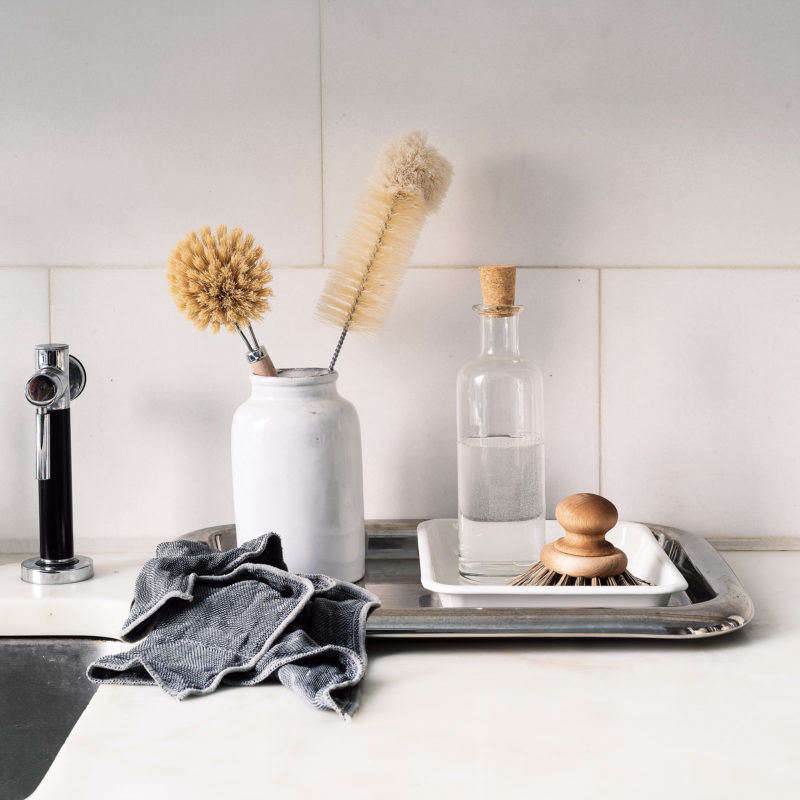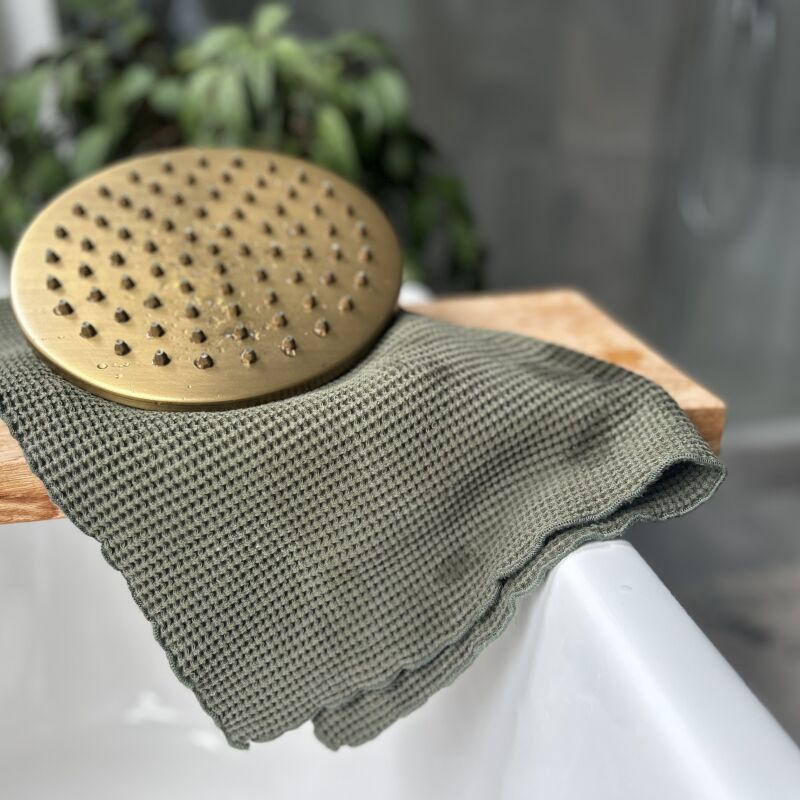Now that it’s time to get reacquainted with our woolens, we’re wondering: how best to keep them clean and in good shape? We posed the question to Kellen Tucker, owner of Sharktooth, a Brooklyn store specializing in vintage blankets, textiles, and rugs. For the past decade, she says, she’s been conducting her own lengthy experiments in fabric care.
“When clients ask how to wash wool,” she says, “my impulse is to say, ‘Please don’t.’ Wool is an incredibly resilient fiber, but it requires the gentlest handling in water and is often best left alone.” That said, to make sure her offerings are spotless and sweet smelling, Kellen and her crew hand-clean pretty much all of Sharktooth’s textiles before they get added to the fold. Here are her words of advice.

1. Shake and hang.
Often ventilating wool is enough. Shake it with oomph. It feels good, it feels productive. Hang it somewhere where the air moves. It’s helpful to remember that dirt is solid, no matter how microscopic. Picture the air lifting the dirt off the fibers and sweeping it away, because that’s what it’s doing.

2. Spot clean by spraying.
Need to take things a step further? Sometimes wool just requires freshening. This is easily achieved by giving it a little spray—whether all over or in spots that need cleaning—before hanging it up to dry.
Wool is hydrophobic, meaning the exterior of the fiber actually repels water. Lanolin occurs naturally, and most wool is treated after production to restore this element. Lanolin acts as a protectant—it’s antibacterial and works to repel dirt and water, which is why wool is considered self-cleaning.
Hot water will cause the fiber to expand, and dry heat will cause the fibers to shorten and shrink, so a spritz is preferred over a soaking, and the dryer is never a good idea. When spot-cleaning dirt or oil, use vinegar diluted with water (1/3 vinegar, 2/3 water), and start slowly. If the piece is dyed, make sure it’s colorfast (the dye won’t bleed). Do this by spot testing with a damp white cloth. If the dye comes off, then it’s not colorfast and you’ll need to dry clean. Dealing with a fresh stain? Seltzer works well on wool—the air bubbles literally trap and lift away the trouble.

3. Bathe with just a hint of soap.
Are your woolens still dirty or musty? Give them a bath. But make sure the soap is mild and ideally pH neutral—Woolite is tried and true (other people swear by Ivory and Dawn dish soaps). I like an oil-based castile soap (even though it’s slightly more alkaline). Regardless, use a fraction of what you think you need: If it starts getting sudsy you’ve gone too far. Many of the properties that protect the wool are oils. When you use detergent, you are essentially stripping the fiber of exactly what is keeping it clean in the first place. Do not scrub or agitate, that will damage the fiber and mess with the shape. Just soak it and let the mixture do its thing. The soap will react with the water and lift out the dirt on its own with no assistance from you.

4. Roll, don’t wring.
Wool can hold up to a third of its weight in water. After you rinse your blanket, do not wring it out. You’ll mess with the shape and will likely never quite get it back again. Just roll it up in a towel to absorb the moisture—often this requires several passes and several towels.

5. Air dry.
Hang the blotted blanket to dry. The ideal is a horizontal netted rack on legs—not something many of us have hanging around. But if you have outdoor space, considering setting up a clothesline. Better yet, set up two clotheslines with a few feet between them—draping the blanket over the pair relieves a lot of the weight on the wet textile. You’re not supposed to hang wool in direct sunlight, but I always break that rule for just a few minutes. The UV light from the sun works with the water to cut the mustiness.
See more from Sharktooth in The Patchwork Quilt Gets a Modern Makeover and The Canvas Carpet: Nautical Canvas Floorcloths. Also take a look at 12 Natural Garment Washes and Detergents.
And, for expert tips for cleaning and caring for linens (before you pack winter bedding away for warmer weather), see:
- Linen Logic: 20 Tips for Taking Care of Your Bedding
- Expert Advice: How to Fold a Fitted Sheet, Step by Step
- Expert Advice: Editors’ Top 23 Cleaning Tips
N.B.: This post is an update; the original story ran on March 31, 2016.
Frequently asked questions
Why should I use woolen blankets?
Woolen blankets are naturally breathable and moisture-wicking, making them ideal for keeping you warm and dry in cold weather.
How often should I clean my woolen blankets?
It's recommended that you clean your woolen blankets once per season, or as needed if they become soiled or stained.
Can I machine wash my woolen blankets?
It's best to hand wash woolen blankets to avoid shrinking or damaging the fibers. However, some woolen blankets may be machine washable on a gentle cycle with a mild detergent. Always check the care label before washing.
What should I use to wash my woolen blankets?
Use a mild detergent, such as Woolite, and cold water to hand wash your woolen blankets. Avoid using hot water or harsh detergents, as this can damage the fibers.
How do I dry my woolen blankets?
Lay your woolen blankets flat on a clean surface to air dry. Do not hang woolen blankets, as this can cause them to stretch out of shape. Don't put them in the dryer.









Have a Question or Comment About This Post?
Join the conversation